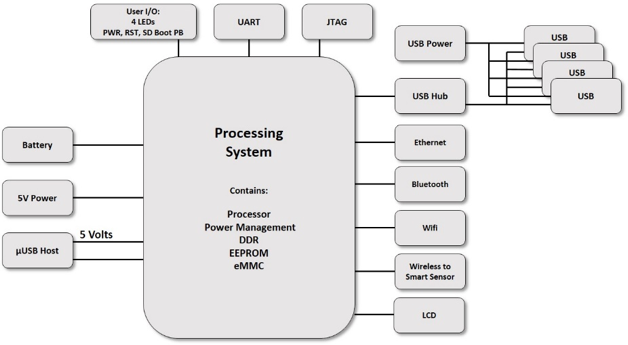So much of today’s technology interest and invention is devoted to the Internet of Things. I recently discovered a good series of posts on the subject by Gene Frantz that ran on Embedded Computing last year, and a few weeks back, I devoted a post to summarizing Gene’s definition of the IoT. At the highest level, Gene sees the IoT as a “system of systems” composed of clouds, aggregators, and smart sensors. He finds aggregators the most interesting IoT system, and here’s my take on his take:
While it may seem at first that, if you have the cloud and smart sensors, you don’t need aggregators there occupying the middle. But Gene argues that a system occupying the middle ground is important. Here’s how he views the role of the aggregator:
- Communicates with the cloud using standard communication methods.
- Communicates with smart sensors with proprietary communications where the need for long battery life and cost exceed the need for standards
- It has enough processing performance to service multiple smart sensors. In doing so it manages the raw data from the multitude of smart sensors, digests their data, prepares a set of information ready to transmit to the cloud and then transmits the data to the cloud.
- In some cases, the aggregator has enough autonomy to act as the cloud for the system it is in.
In keeping with its role in the middle, when compared to the cloud and to smart sensors, aggregators have medium power dissipation, medium cost, medium performance, and medium size. Another aspect of an aggregator: multiple communications options.
In his next post on aggregators, Gene asks what does an aggregator looks like. So we will, too.
An aggregator is made up of:
- A computer system
- A power management system
- A memory system
- Communication systems
Just as an aggregator provides multiple communications options, it has multiple design possibilities: PCB, SOM, SiP, or SoC, with the choice “dependent on size and flexibility constraints.” Here’s the block diagram he provides for a typical aggregator:

Gene then describes what I would characterize as something of a tear-down of a PCB-based aggregator. Not surprising, given Gene’s long career with TI, the aggregator he uses to illustrate his point use TI processors (ARM A8 – a technology that we have deployed at Critical Link in our SOMs).
In his third post on aggregators, Gene explores how aggregators communicate. But first, he talks about shrinking systems, and “lowering power dissipation in digital signal processor devices.” (As an aside, Gene Frantz is considered the father of the DSP!)
… the aggregator will need to have an ultra-low power communication link with the many smart sensors (perhaps thousands) it is assigned to communicate and aggregate the data it receives into information. It is the information it will send on to the cloud for the final actions. The communications with the cloud will be done with an industry standard method. The communications with the smart sensors will most likely be proprietary rather than a standard in order to guarantee minimal power dissipation at its needed communication rate.
Next up in our series on Gene Frantz’s IoT series: the cloud.
